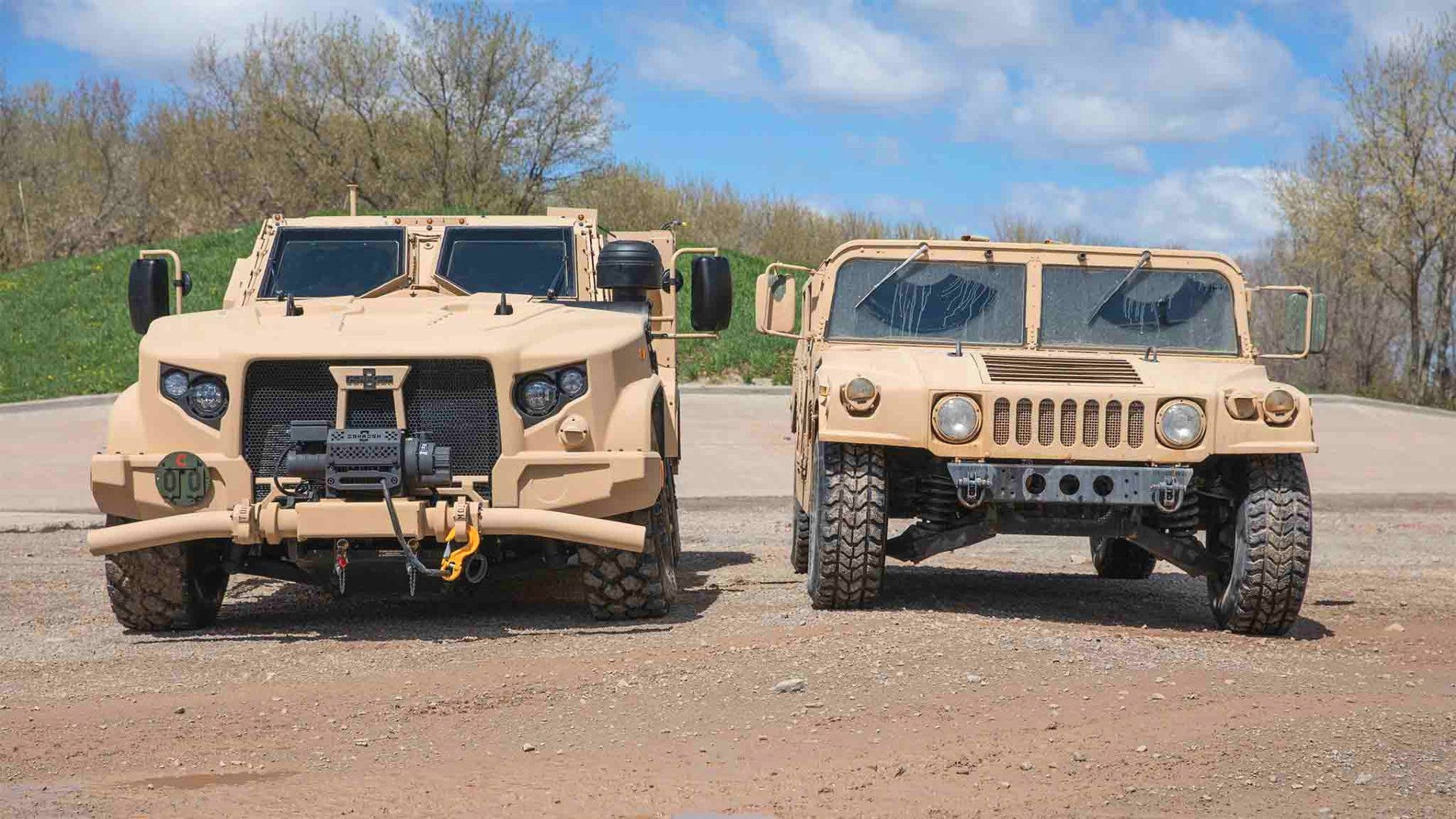The U.S. Army is looking to shift funds away from the Joint Light Tactical Vehicle (JLTV) program in order to fund the continued modernization and procurement of the iconic High Mobility Multipurpose Wheeled Vehicle, or Humvee. While the JLTV was originally expected to replace at least the vast majority, if not all of the service’s Humvees, something that has steadily turned out not to be the case, questions remain about how to fit the new mine-resistant platform in its existing fleet of ground vehicles. These latest funding deferments only complicate those questions further.
A reprogramming request sent to Congress has asked for $36 million to be added to programs to buy new Humvees and retrofit older ones with new systems. If approved, the Humvee program would receive $66 million for fiscal year 2020, enough to purchase 216 new production Humvees. $23 million of that Humvee funding would be diverted from the JLTV program if the reprogramming request is approved, curtailing the purchase, at least for the time being, of some 471 specialized JLTV trailers, according to Inside Defense.
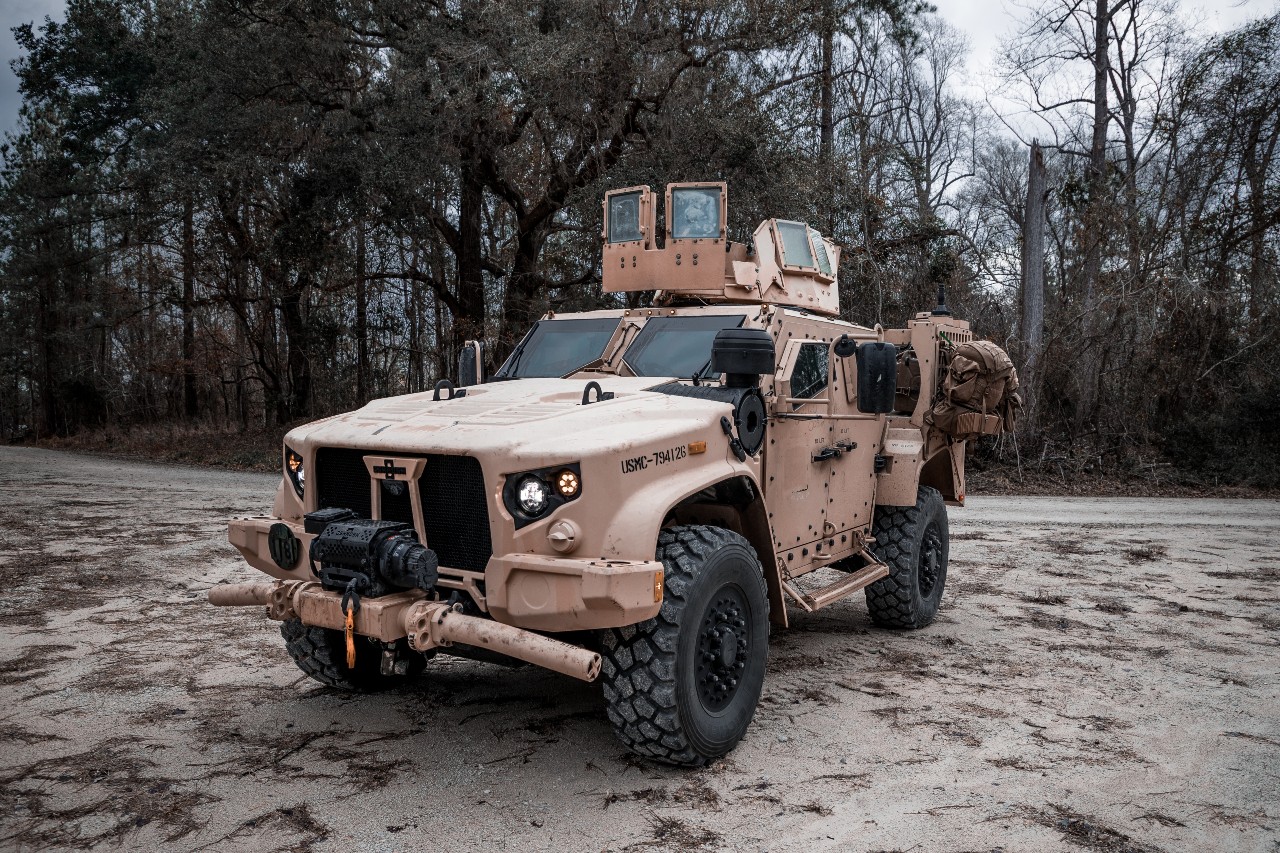
If the reprogramming request isn’t approved, there could be a Humvee production break in February. “The Army is deferring production of these JLTV trailers to reallocate resources towards the HMMWV program to help alleviate a production break for that program and avoid a near-term bill for potential start-up costs should that production break occur,” the reprogramming request states. By law, the Pentagon is required to ask for Congressional approval any time it wants to reallocate funding from one part of the budget to another.
The Humvee reprogramming request also states that “recent program developments, including the loss of projected Foreign Military Sales (FMS) in September 2020, have put HMMWV production at risk.” In 2017, the Humvee’s manufacturer AM General received a $2.2 billion contract from the Army to produce as many as 11,560 Humvees for international customers through 2022.
The Humvee first entered service in 1983 and became popular worldwide thanks to being a highly reconfigurable platform. Throughout its four decades, some of the many Humvee configurations include weapon carrier models, heavy-duty cargo transport, mobile command center, special operations vehicle, and even ambulances. There are a plethora of standard Humvee variants, and the platform has also proven adaptable beyond those, including a “build-your-own Humvee derivative” called the Multi-Purpose Truck (MPT), which you can read about in our prior reporting. However, the nature of the battlefield has changed in recent decades, especially in terms of threats to vehicles, and technological advances have made some features of the original Humvee obsolete or outdated, hence why there is a need to retrofit or modernize older models.
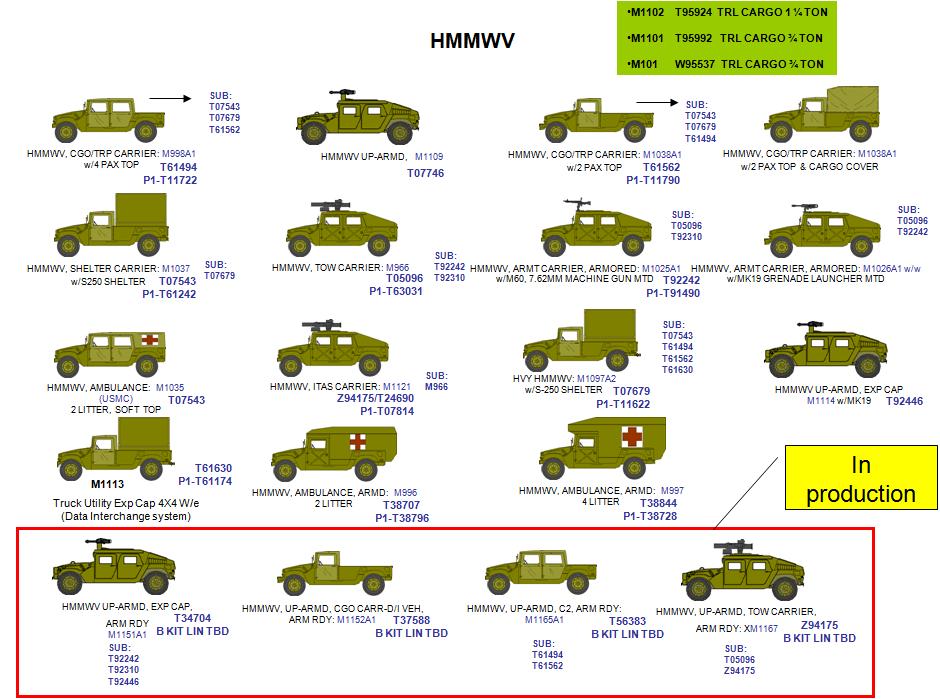
The funds the Pentagon wants to divert away from the JLTV program are intended for what the Army terms as a Humvee “recapitalization” program, or RECAP. This program began in the early 2000s, initially as a way of updating older portions of the fleet and converting them into a standard M1097R1 configuration that included various improvements and system upgrades, as well as the ability to accommodate various add-on armor packages. According to the 2013 Army Weapon Systems Handbook, the program would “incorporate the latest technical insertions common to the fleet” including relocating Humvee air conditioning condensers to the engine compartment, installing high-load rating run-flat tires, adding an improved geared fan drive, and making “electrical improvements.”
The U.S. Army’s FY 2022 budget request documentation states that the program in its current form can include “replacement of the entire chassis, or power pack replacement, Anti-lock Brake System/ Electronic Stability Control (ABS/ESC) integration, low risk technology inserts, address obsolescence concerns and Inspect and Repair Only As Necessary (IROAN).” The budget request also states that newer M1152A1/M1165A1 models will be procured in order to phase out the “oldest non-armored HMMWVs that currently pose readiness challenges and cannot be up-armored.”
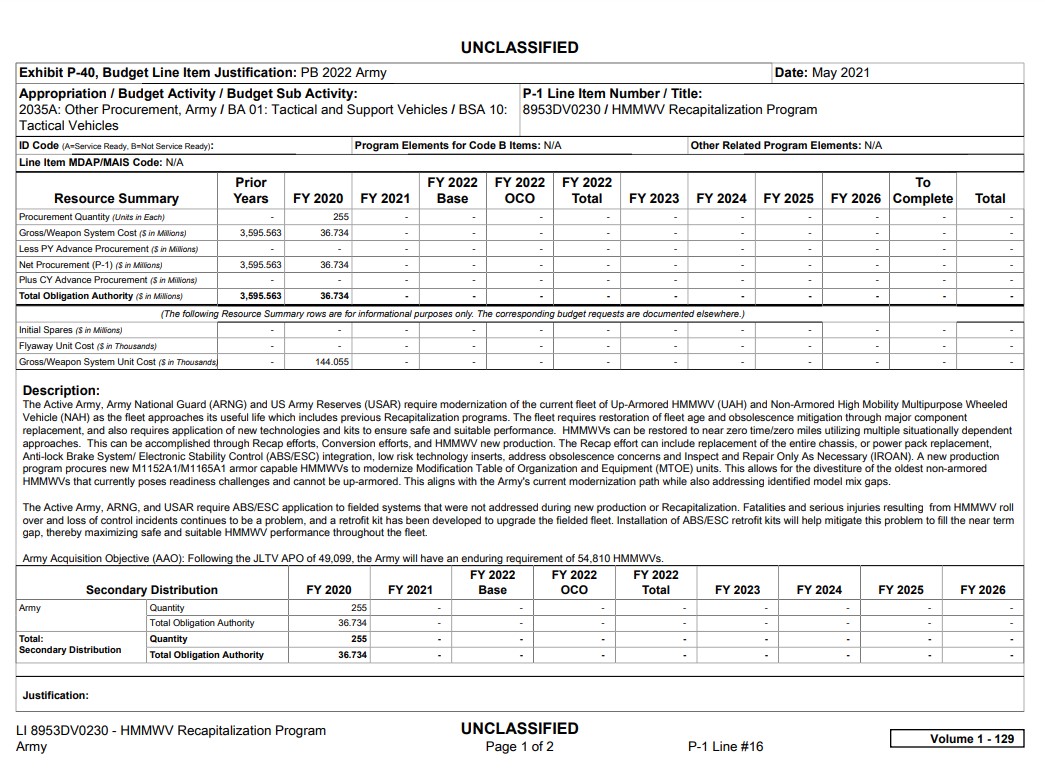
The Army requested $884.4 million for the JLTV program in FY 2021 and $574.5 million in 2022, with plans to acquire close to 49,000 JLTVs by 2041. The 2022 budget request notes that “Current contract options may be exercised through 30 November 2023 assuming contractual quantity headspace is still available.”
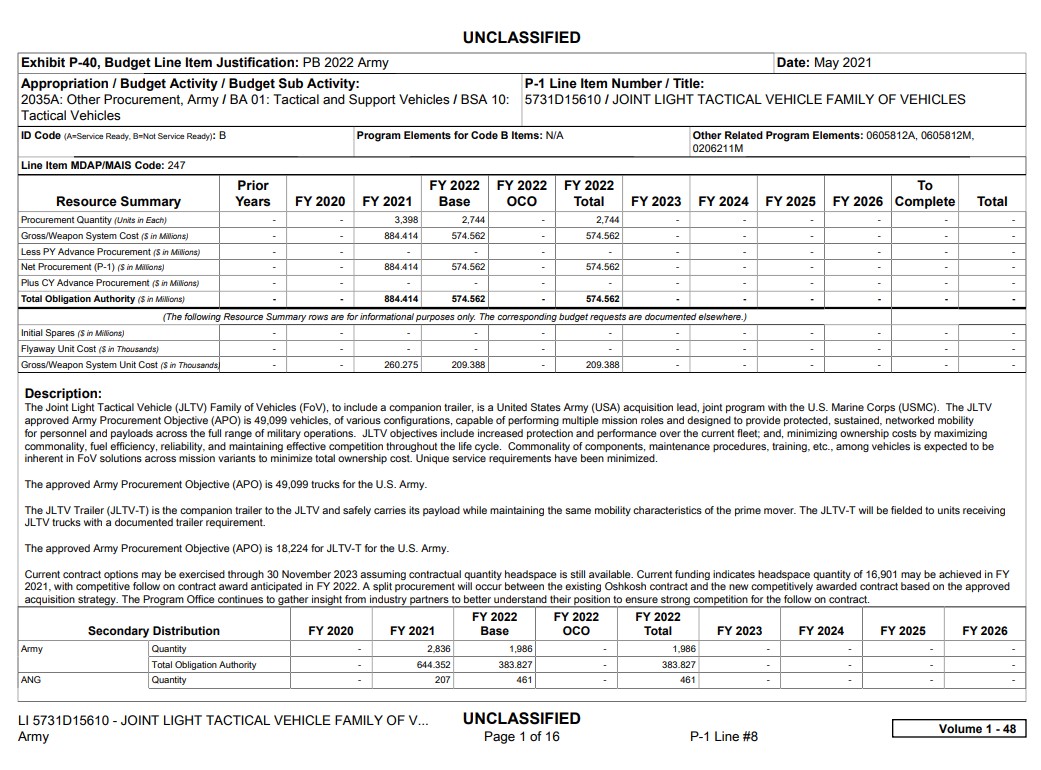
The Army is the central manager for the JLTV program, but the platform is also operated by the United States Marine Corps. In addition, the Air Force has decided to replace some of its Humvees with JLTVs, and there have been a number of sales to foreign countries including the United Kingdom and Lithuania.
The JLTV was originally envisioned as a replacement for Humvees nearly across the board, with initial estimates putting the total number of JLTV purchases at 54,600 vehicles – 5,500 for the USMC and the 49,100 for the Army. That number has been walked back to just over 49,000 as the Army decided that some Humvees would remain in service indefinitely for various roles.
Size and weight have been factors in this decision, as the 22,000-lb JLTV is significantly larger than the Humvee, which isn’t small itself. The size and weight issue is also evidenced by the Army’s decision just recently to procure a smaller vehicle, the Infantry Squad Vehicle, as an alternative to both the JLTV and the Humvee, particularly for airborne units.
In early 2020, the Army reduced its JLTV budget request by 863 vehicles in order to fund other modernization efforts. Former Secretary of Defense Mark Esper, then serving as Secretary of the Army, justified the cuts by saying the JLTV wasn’t as relevant in the current National Defense Strategy since it was designed and procured for use in Iraq and Afghanistan. Some would challenge the idea that the Humvee is somehow better suited to an Army that is supposed to shift focus to higher-end conflicts, especially against potential near-peer adversaries, such as Russia or China, if the decades-old vehicle was too vulnerable for low-end conflicts like Iraq. An argument could be made that mine and small arms resistance is less of an issue in a peer state fight where more advanced weapons pose a greater threat. In that case, lighter, cheaper, and simpler vehicles that have less logistical demands than their larger more complex counterparts may be advantageous. For instance, if holding an island in the Pacific, extra under-hull armor would have little impact on survivability.
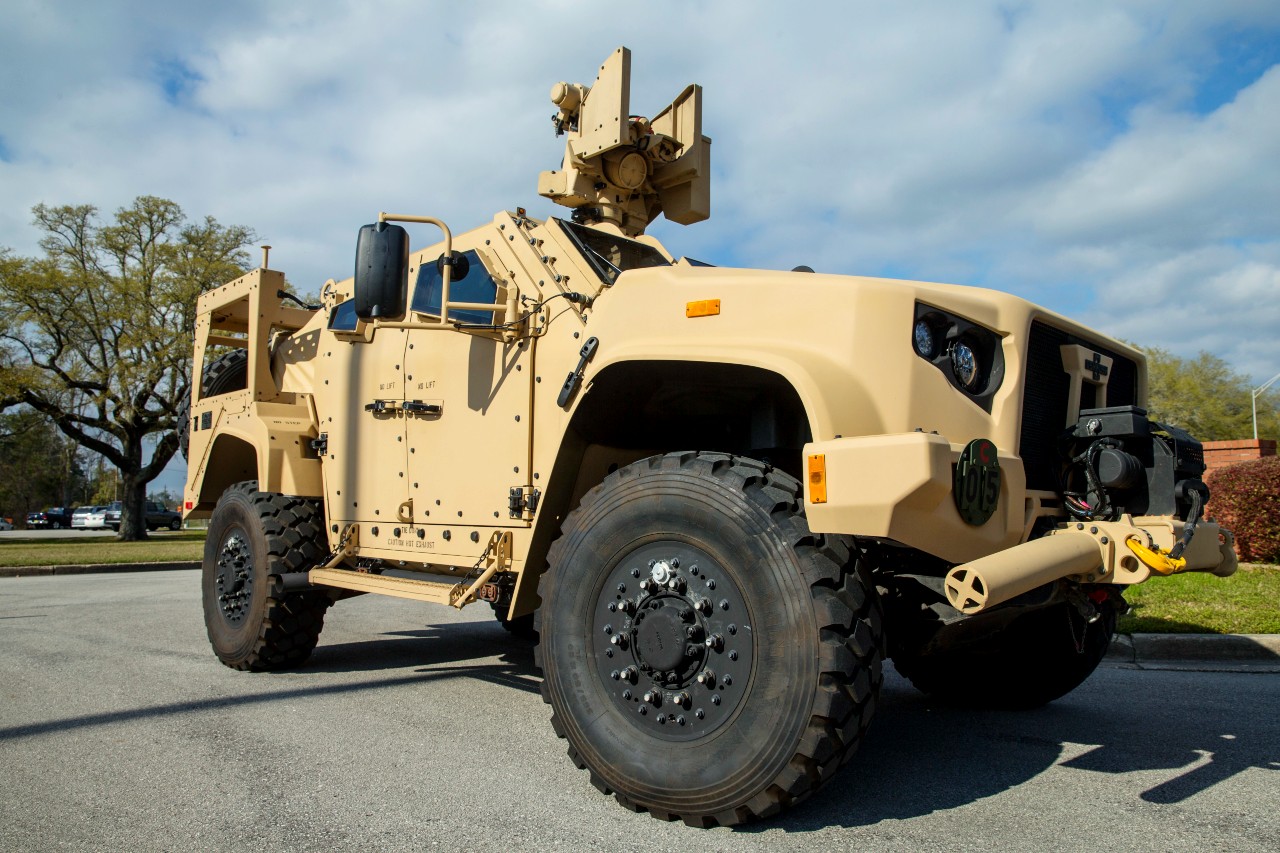
The Army has looked to scale back funding for JLTV in recent years, pushing acquisition timelines back by several years into the early 2040s. At the same time, the Army has already posted a follow-on contract opportunity in order to find a second manufacturer to compete alongside Oshkosh Defense, the current sole manufacturer of the JLTV.
Questions about the JLTV’s role alongside the Army’s existing fleet of Humvees have been posed since the JLTV acquisition program announced its first contracts in 2015. While the Army’s former acquisition chief, Dr. Bruce Jette has said that the JLTV is a “significant improvement over the Humvee when it comes to transportability, speed and agility as well as protection,” Jette told Defense News in 2020 that the Army still has “an objective of 50,000 Humvees still in place or alternative, light, less expensive vehicles to be able to perform mission requirements in the future.” Like others, Jette himself wondered at the time “how do we maintain the existing fleet effectively as we modernize with the JLTVs?”
Despite having been in service for nearly 40 years, the Humvee continues to prove itself as a mainstay of the U.S. Army. As these recent funding reprogramming requests show, the Army isn’t done with the Humvee yet despite having already chosen an eventual replacement in the JLTV. It very well could be that the two vehicles will continue to co-exist as the Humvee recapitalization efforts extend the iconic vehicle’s use well into the next several decades.
Contact the author: Brett@TheDrive.com
